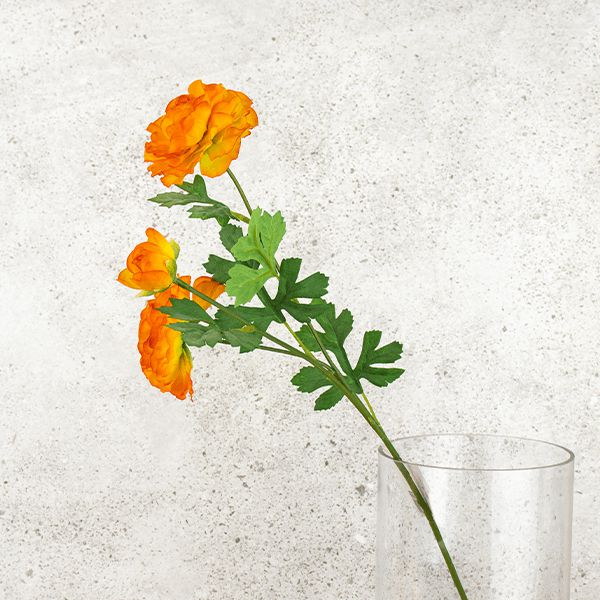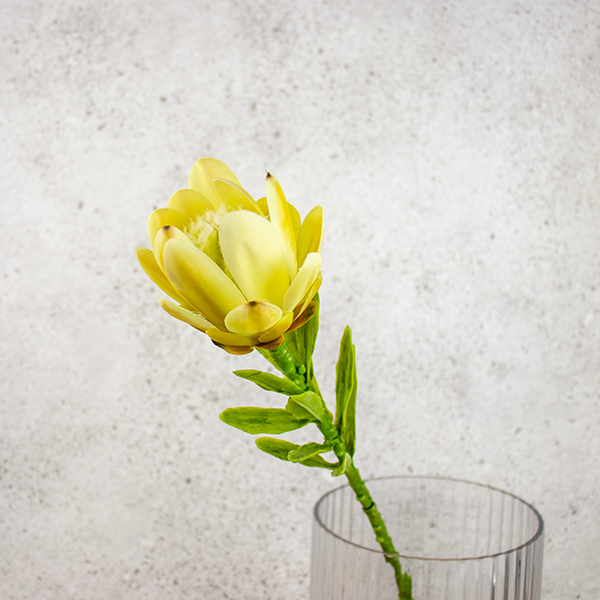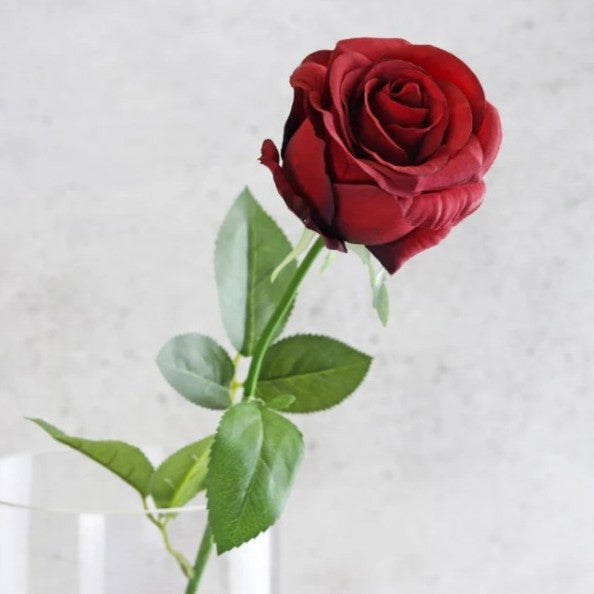Artificial flowers, with their vibrant colours and delicate petals, have long been admired for their beauty. But did you know that each flower colour carries its own symbolic meaning? From passionate red roses to tranquil blue hydrangeas, the colours of flowers have significant implications in various cultures and societies. In this article, we will delve into the fascinating world of flower colours and explore the symbolic meanings they hold.
Whether you're choosing flowers for a special occasion, creating floral arrangements, or simply enjoying the beauty of nature, understanding the symbolism behind different flower colours can add depth and intention to your choices. Red may symbolize love and passion, while yellow signifies friendship and joy. From purity to envy, each hue carries its own message.
By understanding the symbolism behind flower colours, you can enhance your floral experiences and create meaningful connections with others. So, dive in as we unravel the secrets behind the colours of nature's most enchanting creations.
The significance of red artificial flowers
Red flowers have long been associated with intense emotions, primarily love and passion. The classic red rose is perhaps the most iconic representation of romantic love, often exchanged between lovers as a token of affection. The vibrant hue of red is a powerful symbol that conveys deep feelings, making it a popular choice for anniversaries, Valentine's Day, and other romantic occasions. The boldness of red not only captures attention but also evokes a sense of urgency and desire, which is why it is so often used in love-related contexts.
Beyond romance, red flowers can also symbolize strength, courage, and respect. In various cultures, red is a colour of power, often used in ceremonies to celebrate bravery and valour. For instance, the red poppy is a poignant symbol of remembrance, particularly associated with those who lost their lives in wars. This duality of meaning—both romantic and respectful—highlights the complexity of red flowers in conveying human experiences and emotions.
Moreover, red flowers can serve as a catalyst for celebration and joy. They are often included in festive decorations and arrangements, symbolizing happiness and excitement. Whether it’s a wedding, a birthday, or a holiday gathering, red blooms can elevate the atmosphere and bring people together in joyous celebration. Understanding the multifaceted significance of red flowers allows us to appreciate their role in our lives more deeply and meaningfully.

The symbolism of pink artificial flowers
Pink flowers encompass a wide spectrum of meanings, often associated with tenderness, grace, and admiration. The soft hues of pink carry a gentler emotional weight compared to their red counterparts, making them perfect for expressing affection without the intensity of passion. Pink roses, for example, are often given to convey gratitude and appreciation, making them ideal for occasions like Mother’s Day or as a simple thank-you gesture. The subtlety of pink reflects a sense of nurturing and warmth, resonating with those who receive them.
In addition to love and appreciation, pink flowers symbolize innocence and youthfulness. The delicate appearance of blooms like cherry blossoms and peonies evokes a sense of purity and joy, reminding us of the fleeting beauty of life and the importance of cherishing moments. These flowers are often used in celebrations that honour new beginnings, such as baby showers or weddings, where the themes of innocence and hope are prevalent. The gentle charm of pink flowers adds a soft touch to any occasion, creating a serene and inviting atmosphere.
Furthermore, pink flowers can also represent harmony and femininity. They are often associated with the feminine spirit and are often used to celebrate women’s achievements and milestones. Events such as International Women’s Day often see a surge in the gifting of pink flowers, as they embody support and solidarity among women. Understanding the diverse meanings behind pink flowers allows us to choose them thoughtfully for various occasions, ensuring that the sentiment behind our floral gifts resonates with the recipients.

Understanding the meaning of yellow artificial flowers
Yellow flowers are often associated with joy, warmth, and friendship. The bright and cheerful nature of yellow evokes feelings of happiness and optimism, making these blooms perfect for expressing platonic love or celebrating friendships. Daisies and sunflowers, for example, are popular choices for uplifting floral arrangements that aim to brighten someone's day. Gifting yellow flowers can convey a message of support and encouragement, making them ideal for someone going through a tough time or celebrating a personal achievement.
In many cultures, yellow flowers are also symbols of new beginnings and renewal. The colour yellow is often linked with the sun, representing light and vitality. As spring arrives, yellow blooms like daffodils and tulips emerge, signifying the end of winter and the promise of new life. This connection to rebirth makes yellow flowers a common choice for celebrations of growth, such as graduations or milestones in one’s career. They serve as a reminder that change can bring about positive outcomes and new opportunities.
However, yellow flowers can also carry more complex meanings depending on the context. In some cultures, they may represent jealousy or betrayal, particularly when discussing relationships. While this is less common in contemporary floral symbolism, it is essential to be aware of the cultural nuances surrounding yellow flowers. Understanding the full spectrum of meanings associated with yellow blooms allows us to use them thoughtfully, ensuring that our intentions align with the messages they convey.

Shop Yellow Artificial Flowers
The emotions associated with blue artificial flowers
Blue flowers are often seen as symbols of tranquillity, peace, and stability. The calming presence of blue is reminiscent of serene skies and clear waters, making these blooms perfect for conveying feelings of peace and calmness. Flowers like bluebells and hydrangeas are often used in arrangements meant to create a soothing atmosphere, making them ideal for settings like spas, meditation spaces, or as gifts for someone needing solace. The gentle nature of blue flowers encourages relaxation and reflection, offering a sense of emotional balance to those who encounter them.
In addition to peace, blue flowers can also symbolize loyalty and trust. The rich, deep tones of blue are often associated with dependability and steadfastness, making them a fitting choice for expressing commitment in friendships or romantic partnerships. Gifting blue flowers, such as irises or delphiniums, can convey a message of reliability and support, reinforcing the bonds of trust between individuals. In a world where relationships can often feel uncertain, blue flowers offer a reassuring reminder of the strength of loyalty.
However, blue flowers can also carry deeper connotations of sadness and longing. The colour blue is often associated with melancholy, and flowers like forget-me-nots can evoke feelings of nostalgia and remembrance. These blooms may be used to honour lost loved ones or to reflect on bittersweet memories. Understanding the emotional spectrum of blue flowers allows us to appreciate their multifaceted nature and choose them with intention, ensuring that the sentiments expressed align with the feelings we wish to convey.

Exploring the meanings behind purple artificial flowers
Purple flowers are often seen as symbols of luxury, power, and ambition. The colour purple has historically been associated with royalty and nobility, making these blooms a popular choice for formal events or celebrations. Flowers like orchids and lavender carry an air of elegance and sophistication, often used in arrangements to convey a sense of grandeur and prestige. Gifting purple flowers can express admiration and appreciation for someone’s accomplishments, making them suitable for occasions like graduations, promotions, or significant milestones.
Beyond luxury, purple flowers also symbolize spirituality and transformation. The deeper hues of purple are often linked with introspection and mystical experiences, making them a fitting choice for those seeking personal growth or enlightenment. Flowers such as lilacs and asters can evoke feelings of contemplation and inner peace, serving as reminders of the beauty found in self-discovery. These blooms are often included in meditative spaces or used in rituals that focus on spiritual development, highlighting their connection to the deeper aspects of human experience.
Moreover, purple flowers can represent creativity and inspiration. The unique and vibrant shades of purple can spark imagination and encourage artistic expression. They are often gifted to those involved in creative pursuits, serving as a motivational gesture to inspire new ideas and projects. Understanding the various meanings associated with purple flowers allows us to select them thoughtfully for different occasions, ensuring that they convey the intended sentiments and support the emotional undertones of our relationships.

Shop Purple Artificial Flowers
The symbolism of white artificial flowers
White flowers are universally recognized as symbols of purity, innocence, and new beginnings. The pristine nature of white evokes a sense of cleanliness and simplicity, making these blooms a popular choice for weddings and christenings. Flowers like lilies and daisies are often included in bridal bouquets and arrangements, standing for the hope and joy of new chapters in life. The symbolism of white flowers resonates deeply, encouraging feelings of optimism and fresh starts.
In addition to purity, white flowers can also signify peace and tranquillity. Their soft, gentle appearance can create a calming atmosphere, making them ideal for memorial services or moments of reflection. Gifting white flowers, such as chrysanthemums or white roses, can convey a message of sympathy and support during difficult times, offering comfort to those grieving or experiencing loss. This nurturing quality makes white flowers particularly meaningful in moments of sorrow.
Furthermore, white flowers can symbolize truth and sincerity. The unblemished nature of these blooms reflects honesty and transparency in relationships, making them a fitting choice for expressing genuine emotions. They can be used to signify a commitment to truthfulness in friendships or romantic partnerships, reinforcing the importance of open communication. Understanding the diverse meanings behind white flowers enriches our appreciation for their beauty and allows us to incorporate them meaningfully into our lives.

The hidden meanings of orange artificial flowers
Orange flowers are vibrant and energetic, often symbolizing enthusiasm, creativity, and warmth. The lively hue of orange evokes feelings of excitement and joy, making these blooms perfect for celebrating achievements or special occasions. Flowers like marigolds and tiger lilies are frequently used in festive arrangements, bringing a sense of liveliness and cheerfulness to any setting. Gifting orange flowers can convey a message of encouragement and support, inspiring recipients to embrace their passions and pursue their dreams.
In addition to enthusiasm, orange flowers can also represent determination and resilience. The boldness of orange signifies a strong will and the drive to overcome challenges. These flowers can serve as a motivational reminder for someone facing obstacles, encouraging them to push forward and remain steadfast in their pursuits. Including orange blooms in arrangements intended for celebrations or achievements can amplify the message of perseverance and strength.
Moreover, orange flowers can symbolize friendship and camaraderie. Their bright and inviting nature makes them ideal for expressing appreciation for friends and loved ones. Gifting orange flowers, like zinnias or gerbera daisies, can strengthen bonds of friendship and convey feelings of gratitude and joy in shared experiences. Understanding the hidden meanings behind orange flowers allows us to choose them thoughtfully, ensuring that our intentions resonate with the recipients and enhance our connections.

Shop Orange Artificial Flowers
The significance of green artificial flowers
Green flowers, though less common than their more colourful counterparts, carry unique and meaningful symbolism. The colour green is often associated with nature, growth, and renewal, making green flowers a powerful representation of life and vitality. Flowers like green hydrangeas and green orchids can evoke feelings of freshness and rejuvenation, serving as reminders of the beauty found in natural cycles. Gifting green flowers can convey messages of hope and encouragement for personal growth, making them suitable for various occasions focused on renewal and transformation.
In addition to growth, green flowers can symbolize balance and harmony. The soothing nature of green is often linked to feelings of stability and tranquillity, making these blooms ideal for creating calming environments. Green flowers can be incorporated into arrangements for events like wellness retreats or peaceful gatherings, encouraging a sense of unity and balance among participants. Their presence can foster a shared sense of calm, enhancing the overall atmosphere of the occasion.
Finally, green flowers can also represent prosperity and abundance. The colour green is often linked to wealth and fertility, making these blooms symbolic of good fortune and success. Incorporating green flowers into celebrations like housewarmings or business openings can enhance the message of prosperity and abundance, inviting positive energy into the space. Understanding the significance of green flowers allows us to appreciate their unique role in floral symbolism and choose them thoughtfully for various occasions.

Conclusion: Choosing the right flower colour for different occasions
Selecting the right flower colour for a specific occasion can enhance the emotional impact of your gesture and deepen connections with others. Understanding the symbolic meanings behind various flower colours allows you to choose blooms that resonate with the sentiments you wish to convey. Whether celebrating love with red roses, expressing gratitude with pink flowers, or offering support with yellow blooms, each colour carries its unique message that can enhance your floral gifts.
Consider the emotions you wish to evoke when choosing flowers for special occasions. If you want to inspire calmness and peace, blue flowers may be the ideal choice. For celebrations of creativity and passion, orange flowers can serve as a vibrant reminder of enthusiasm. Likewise, white flowers can express purity and sincerity, making them perfect for weddings and memorials alike. By matching the flower colours to the context and emotions of the occasion, you can create a more meaningful experience for both the giver and the recipient.
In conclusion, the world of floral symbolism is rich and diverse, allowing for thoughtful expression through the language of flowers. By exploring the meanings behind different flower colours, you can choose your Silk by Design floral arrangements and gifts, ensuring they resonate with the feelings you aim to share. Embrace the beauty of nature’s colours and let them guide you in creating meaningful connections with those around you.




Leave a comment
This site is protected by hCaptcha and the hCaptcha Privacy Policy and Terms of Service apply.